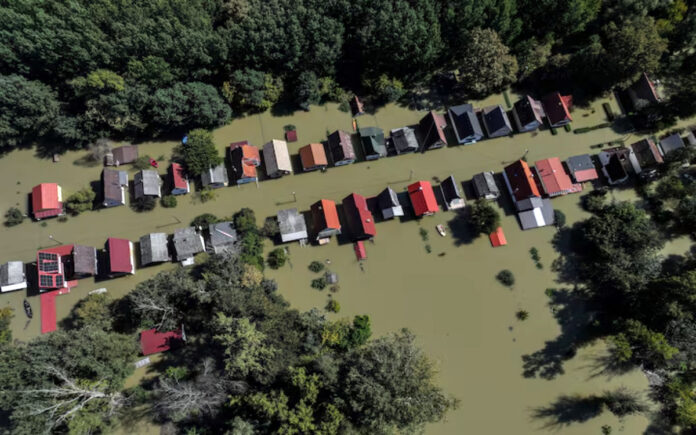Warsaw: Climate change has increased the likelihood of downpours like those that led to devastating floods in Central Europe this month, making such events twice as probable, according to a report released on Wednesday. The authors, comprising an international team of scientists, are urging policymakers to take immediate action to mitigate global warming.
This month’s catastrophic flooding is the worst to strike Central Europe in over two decades, resulting in the deaths of 24 people and leaving towns covered in mud and debris. The aftermath includes significant damage to buildings, collapsed bridges, and a repair bill running into billions of dollars.
The report, produced by World Weather Attribution, an international consortium of scientists studying the link between climate change and extreme weather events, indicated that the four days of rainfall associated with Storm Boris represented the heaviest precipitation ever recorded in Central Europe. It concluded that climate change has made such intense downpours at least twice as likely and 7% heavier than in previous years.
“Yet again, these floods highlight the devastating results of fossil fuel-driven warming,” stated Joyce Kimutai, a researcher at Imperial College London’s Grantham Institute and co-author of the study. “Until oil, gas, and coal are replaced with renewable energy, storms like Boris will unleash even heavier rainfall, driving economy-crippling floods.”
Also Read | Microsoft Plans Historic Three Mile Island Reactor Restart for AI Needs
The report highlighted that while the specific combination of weather patterns contributing to the storm—including cold air from the Alps interacting with warm air over the Mediterranean and the Black Seas—was unusual, climate change is making such storms both more intense and more frequent.
Also Read | Second Peace Summit on Ukraine: Zelenskyy Invites India and Global Leaders to Join
Currently, such storms are expected to occur on average every 100 to 300 years in today’s climate, which has experienced a 1.3 degrees Celsius rise in temperature since pre-industrial times. However, the report warns that if global warming reaches 2 degrees Celsius above pre-industrial levels, a scenario projected for the 2050s, these storms will become 50% more frequent and deliver at least 5% more rainfall.



